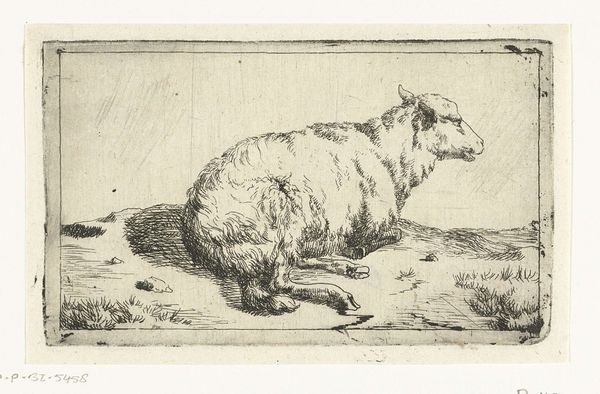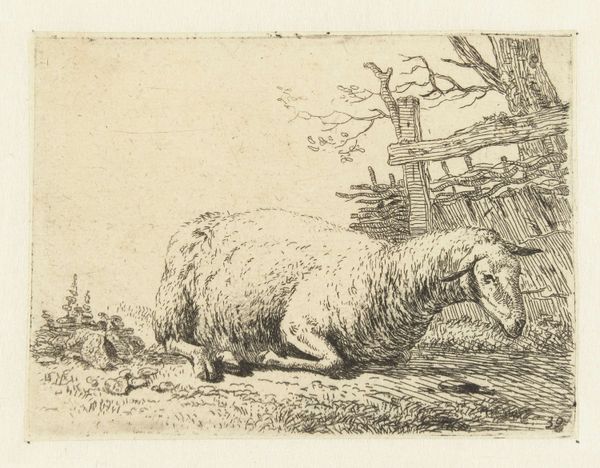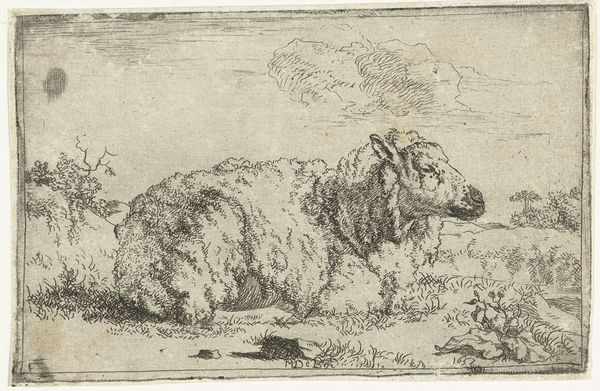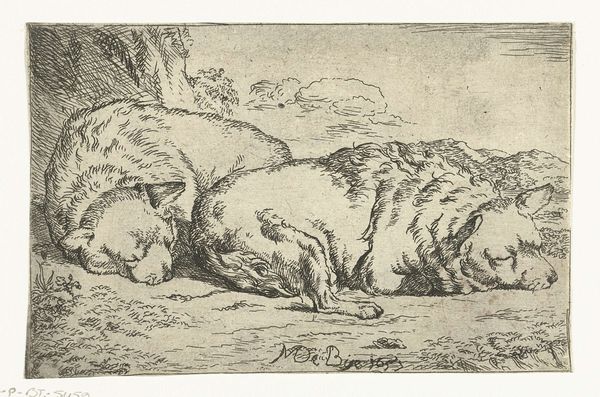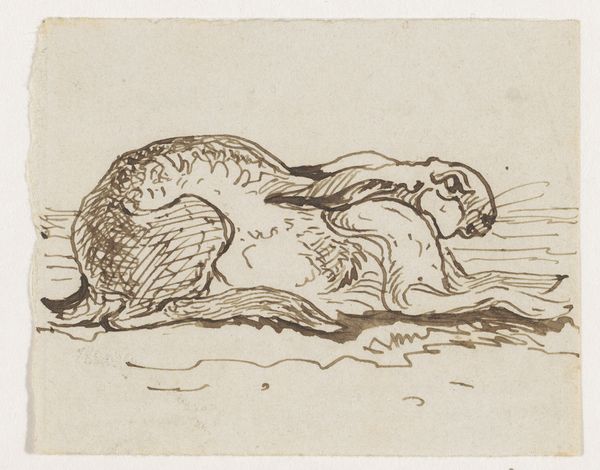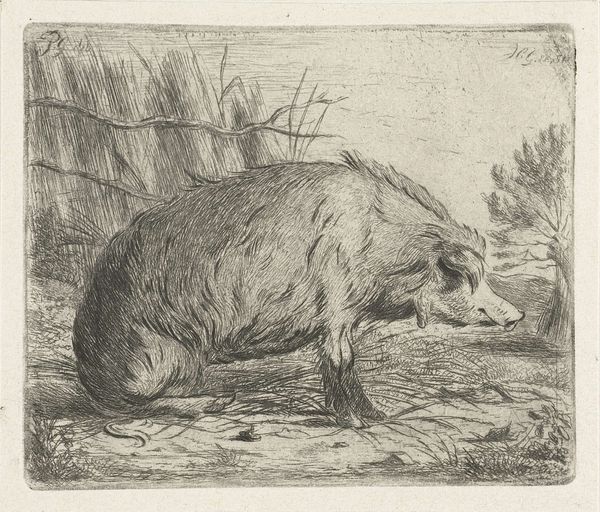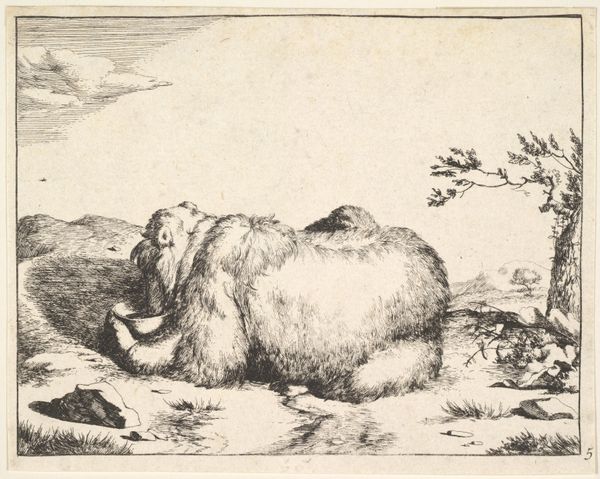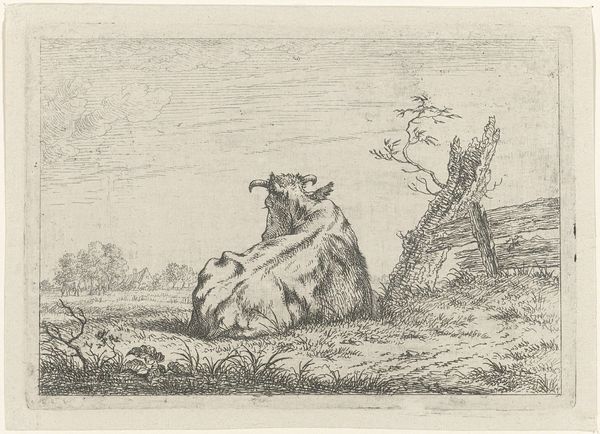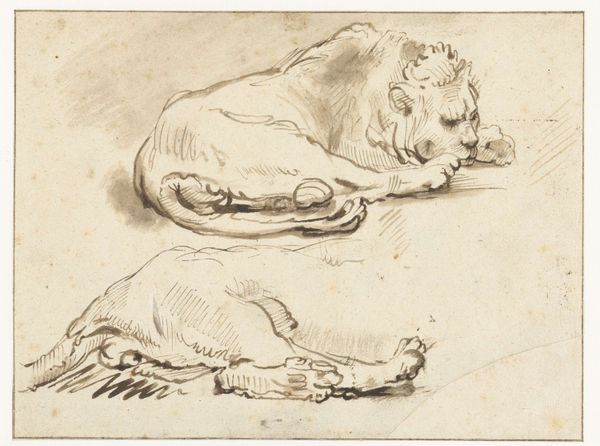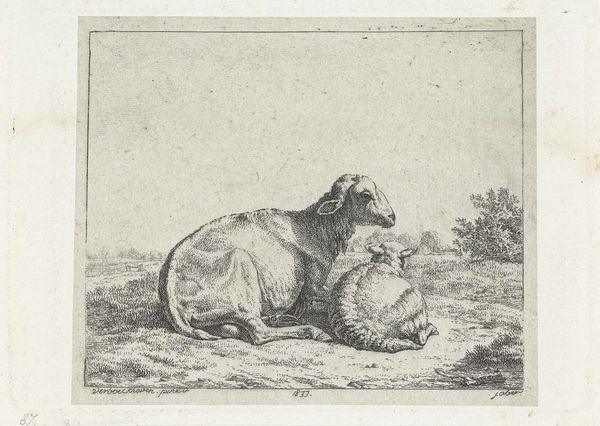
drawing, print, etching, pen, engraving
#
drawing
#
baroque
# print
#
pen sketch
#
etching
#
pencil sketch
#
dog
#
landscape
#
pen-ink sketch
#
pen
#
engraving
Dimensions: height 67 mm, width 104 mm
Copyright: Rijks Museum: Open Domain
Marcus de Bye made this etching of a sleeping dog in the Netherlands in the mid-17th century. But, what does it tell us about Dutch culture? In the 17th century, the Netherlands experienced a Golden Age of economic growth and cultural flourishing. Dutch art became known for its realism, and its focus on everyday life. This etching reflects that, with its simple depiction of a dog at rest. Dogs were common household pets, but they were also working animals, used for hunting and guarding property. This dog, with its long hair and relaxed posture, may be a hunting dog taking a break. It is worth noting that while the Netherlands was a relatively egalitarian society, there were still social hierarchies. The ownership of dogs, particularly hunting dogs, may have been a status symbol. Art historians can examine household inventories, hunting manuals, and other historical documents to gain a deeper understanding of the social and cultural context of this artwork. We can see the image as more than just a dog but a social document.
Comments
No comments
Be the first to comment and join the conversation on the ultimate creative platform.
